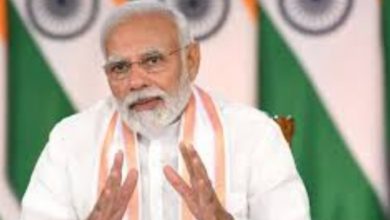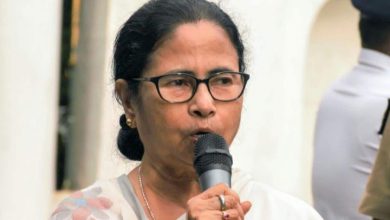Number of gun deaths reached record levels in 2020, CDC finds

Gun deaths reached the highest number ever recorded in the United States in 2020, the first year of the pandemic, as gun-related homicides surged 35%, the Centers for Disease Control and Prevention reported on Tuesday.
“This is a horic increase, with the rate having reached the highest level in over 25 years,” Dr. Debra E. Houry, acting principal deputy director of the CDC and the director of the National Center for Injury Prevention and Control, said at a news briefing.
More than 45,000 Americans died in gun-related incidents as the pandemic spread in the United States, the highest number on record, federal data show. The gun homicide rate was the highest reported since 1994.
That represents the largest one-year increase in modern hory, according to Ari Davis, a policy adviser at the Johns Hopkins Center for Gun Violence Solutions, which recently released its own analysis of CDC data.
Cities from coast to coast have seen bloody episodes of gun violence since the pandemic began, but the new report is official confirmation of something that many Americans had already sensed: amid the stress and upheaval, citizens turned to guns in numbers rarely seen.
Candles lit for Derek Trucios, 17, who was killed a gunman, in Brooklyn, Oct. 29, 2020. (Dave Sanders/The New York Times)
The new numbers reveal not only startling increases in the rates of gun homicide, but also document “widened disparities” that exed even before the pandemic began, the CDC said.
Homicides involving firearms were generally highest, and showed the largest increases, in poor communities, and exacted a disproportionate toll on younger Black men in particular. Deaths of Black women, though smaller in number, also increased significantly.
More than half of gun deaths were suicides, however, and that number did not substantially increase from 2019 to 2020. The overall rise in gun deaths therefore was 15% in 2020, the CDC said.
The rise in gun violence has afflicted cities large and small, in both blue and red states, leaving law enforcement scrambling for answers. In many places, like Los Angeles and Denver, the increases have persed in 2021, and trends this year show no sign of a reversal.
“We have two things together: the trauma of the past two years, and the mental health crisis that came out of this pandemic,” Los Angeles Mayor Eric Garcetti said this year at an event to discuss crime. “Those things have caused us to see more violence.”
Handguns are displayed for sale at a gun shop in Philadelphia. The rate of gun-related homicides in the U.S. reached its highest level in over 25 years in 2020, but experts are still not certain why. (Rachel Wisniewski/The New York Times)
Chropher Herrmann, an assant professor in the Department of Law and Police Science at John Jay College of Criminal Justice in New York, said he was not surprised the CDC’s analysis but was worried what it might augur in the coming summer, when there are typically more gun homicides.
“June, July, August are always the biggest shooting months,” he said, adding that most large American cities see about a 30% uptick in shootings and homicides in the summer.
Federal officials and outside experts were not certain what caused the surge in gun deaths.
“One possible explanation is stressors associated with the COVID pandemic that could have played a role, including changes and disruption to services and education, social isolation, housing instability and difficulty covering daily expenses,” said Thomas R. Simon, associate director for science at the CDC’s division of violence prevention.
The rise also corresponded to accelerated sales of firearms as the pandemic spread and lockdowns became the norm, the CDC analysis noted. Americans went on a gun-buying spree in 2020 that continued into 2021, when in a single week the FBI reported a record 1.2 million background checks.
The primary reason people give for purchasing a handgun is self-protection. But research published in the 1990s established that simply having a gun in the home increases the risk of a gun homicide a factor of three, and increases the risk of a suicide a factor of five.
Police investigators at the scene of a shooting in New Brunswick, N.J., on Sept. 13, 2020. (Bryan Anselm/The New York Times)
Today, gun buying has largely returned to pre-pandemic levels, but there remain roughly 15 million more guns in circulation than there would be without the pandemic, according to Garen J. Wintemute, a gun violence researcher at the University of California, Davis.
But gun homicide has many roots. Federal researchers also cited disruptions in routine health care; protests over police use of lethal force; a rise in domestic violence; inequitable access to health care; and long-standing systemic racism that has contributed to poor housing conditions, limited educational opportunities and high poverty rates.
Law enforcement officials and criminologs pointed not just to the pandemic, but also to the divisive presidential election in 2020, as gun buying tends to increase at times of deep political polarization.
And there is a sense, harder to quantify, that psyches are frayed — that citizens may be quicker to turn to violence when provoked.
“Something has happened to the American people during this two years that has taken violence to a new level,” said Chuck Wexler, the executive director of the Police Executive Research Forum, a nonprofit that studies law enforcement policy.
“We don’t know what it is, but if you talk to police chiefs they will tell you that what used to be some small altercation now becomes a shooting and a homicide.”
Black Americans remained disproportionately affected gun violence in 2020. Firearm homicide rates increased 39.5% among Black people from 2019 to 2020, to 11,904. The victims were overwhelmingly young men.
The Johns Hopkins analysis found that Black men ages 15-34 accounted for 38% of all gun homicide victims in 2020, though this group represented just 2% of the U.S. population.
Black men ages 15-34 were more than 20 times more likely to be killed with a gun than white men of the same age. The number of Black women killed guns also increased almost 50% in 2020 compared with 2019, Davis said.
Rising rates of gun-related homicides were seen in all racial and ethnic groups, except among Americans of Asian and Pacific Islander descent, who saw a small decrease.
Gun-related suicides have long been more common among older white men. But in 2020, rates rose mostly sharply among Native Americans and Alaska Native groups, although the numbers were still small compared with those among white men.
“We’re going to need to develop different types of solutions to deal with different types of gun violence,” Davis said.
The last time homicide rates involving firearms peaked was during the crack epidemic of 1993-94, said Andrew Morral, a senior behavioral scient at RAND Corp. and the director of the National Collaborative on Gun Violence Research. Rates declined until 2015, but have been inching up ever since.
“It’s pretty alarming,” Morral said. “It’s a bigger jump than I would have expected.”
But there is no solid explanation for the decline or the rise, he added: “In a sense it’s a mystery. It’s the big question everyone wants the answer to. Everyone has a theory, but it’s very hard to test the theories.”
Even if the pandemic is part of the answer, “that doesn’t explain why rates have been rising since 2016,” he said.
The CDC is funding 18 research projects aimed at identifying causes of gun violence and developing solutions. The research spans a broad range of interventions: One experiment relies on outreach workers to mediate potentially lethal conflicts in a community, while another provides services to teens and young adults who have been hospitalized with gun injuries.
Others involve dribution of free lockboxes for storing firearms safely in the home.
Projects like these were frozen under the 1996 Dickey Amendment, named after Rep. Jay Dickey, R-Ark., which barred the CDC from spending money to advocate or promote gun control.
Congress has restored $25 million in funding for firearm injury prevention research, which is split between the CDC and the National Institutes of Health.





